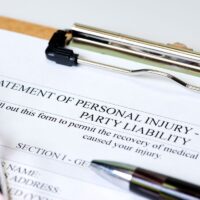Ways to Prove Negligence in New York Personal Injury Cases

Personal injury cases in New York hinge on establishing negligence—a legal concept that holds individuals or entities accountable for the harm caused by their actions or inactions that violate a duty of care they owe to the injured person. Understanding the different ways of proving negligence is crucial for anyone involved in a personal injury claim. Read on for a discussion of the various methods and considerations involved in proving negligence in New York. If you have been hurt by the negligence of another in New York or the Hudson Valley, reach out to Dupée & Monroe in Goshen to discuss your potential claim with an experienced New York personal injury lawyer.
What Is Negligence in Personal Injury Law?
Negligence is a fundamental principle in personal injury law, referring to a breach of the duty of care that results in harm or injury to another person. In New York, as in other jurisdictions, proving negligence is essential for a successful personal injury claim. It involves demonstrating that the defendant failed to act with the level of care that a reasonably prudent person would have exercised under similar circumstances.
The Four Elements of Negligence
To establish negligence in a personal injury case in New York, the plaintiff must prove four key elements:
- Duty of Care: The defendant had a legal obligation to act in a certain way toward the plaintiff.
- Breach of Duty: The defendant failed to meet their duty of care.
- Causation: The defendant’s breach of duty directly caused the plaintiff’s injuries.
- Damages: The plaintiff suffered actual harm or losses as a result of the defendant’s actions.
Below we examine each of these elements in turn.
1. Establishing Duty of Care
The first step in proving negligence is to demonstrate that the defendant owed a duty of care to the plaintiff. This duty varies depending on the relationship between the parties and the circumstances of the case. For example, a business owner has a duty to ensure their premises are safe for customers.
2. Demonstrating Breach of Duty
Once a duty of care is established, the plaintiff must show that the defendant breached this duty. This could involve actions like reckless driving, failure to maintain safe premises, or not adhering to safety regulations.
3. Proving Causation
Proving that the defendant’s breach of duty directly caused the plaintiff’s injuries is crucial. This often requires evidence such as medical records, expert testimony, and accident reconstruction to draw a clear link between the defendant’s actions and the injury. Causation has both factual and legal elements that must be proven, often making it one of the most complex aspects of proving negligence.
4. Documenting Damages
The final element involves proving that the plaintiff suffered actual damages. This can include medical bills, lost wages, pain and suffering, and other losses resulting from the injury.
Evidence in Proving Negligence
Compelling evidence is pivotal in proving negligence. Common types of evidence in New York personal injury cases include:
- Photographic and Video Evidence: Images or videos capturing the incident or hazardous conditions can be powerful in demonstrating negligence.
- Witness Testimonies: Statements from people who witnessed the event can provide crucial insights into what happened.
- Expert Opinions: Professionals in fields like medicine or accident reconstruction can help establish causation and the extent of damages.
- Physical Evidence: Objects or materials involved in the incident, such as damaged property or clothing, can support the plaintiff’s claims.
Comparative Negligence in New York
New York follows the rule of “pure” comparative negligence, which means that if the plaintiff is found partially responsible for their injuries, their compensation may be reduced proportionally to their degree of fault, but it will not keep them from bringing a claim against a negligent party for their share of the blame. Understanding how comparative negligence works is essential for anyone involved in a personal injury claim in New York.
Get Experienced Legal Help Proving Negligence in Your Personal Injury Case in New York
Proving negligence in a New York personal injury case requires a thorough understanding of legal principles and a strategic approach to presenting evidence. Each element of negligence – duty of care, breach, causation, and damages – must be convincingly established to succeed in a claim. For individuals seeking justice in personal injury cases, partnering with a knowledgeable and experienced New York personal injury attorney is invaluable in navigating this complex process and achieving a favorable outcome. In New York and the Hudson Valley, call Dupée & Monroe in Goshen at 845-294-8900 for a complimentary consultation to discuss your claims.
